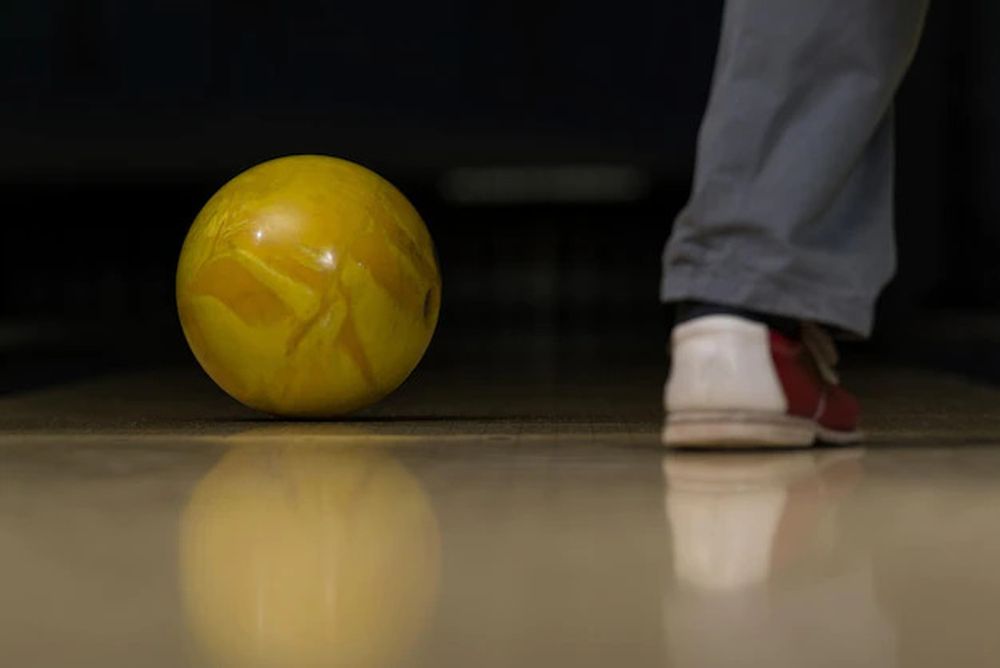Do you love to hit the bowling alley with friends or family? While it’s a fun and entertaining pastime, have you ever wondered if it’s bad for your back?
Bowling requires repetitive motion that involves twisting, bending and throwing a heavy ball. If done improperly or without proper technique, it can cause significant strain on your back muscles and spine. Understanding the mechanics of bowling is crucial to determine whether it poses any risk to your back.
In this article, we’ll dive into the potential impact of repetitive motion on your back and explore proper techniques to minimize injury risk. Additionally, we’ll look at exercises that can strengthen and condition your body for bowling while also providing tips for enjoying this popular activity without harming your back.
So let’s get started!
Understanding the Mechanics of Bowling
You’re probably not aware of the intricate movements your body goes through every time you roll that ball down the lane.
Bowling technique is an essential factor in reducing the risk of back injuries. Proper form and posture are crucial to avoid putting unnecessary stress on your spine. You should start with a relaxed stance, keeping your feet shoulder-width apart, and aligning them parallel to the foul line.
Common mistakes while bowling include bending too far forward or backward, shifting weight onto one leg, or twisting your torso excessively during delivery. These movements can overload your lower back muscles and create strain on your lumbar spine.
It’s essential to maintain a neutral spine position throughout the game to distribute weight evenly across both legs.
To prevent back pain from bowling, it’s crucial to keep up regular exercise routines that strengthen core muscles and improve flexibility. Strengthening exercises like planks or side bridges help build endurance in abdominal muscles that support proper posture during the game.
Stretching exercises such as hamstring stretches or hip flexor stretches can also enhance muscle flexibility and reduce tension around the lower back area.
In summary, mastering proper bowling technique is fundamental in preventing potential back injuries. Avoid common mistakes by maintaining a neutral spine position and distributing weight evenly across both legs. Regular exercise routines that target core strength and muscle flexibility are also crucial in reducing back pain from bowling activities.
The Potential Impact of Repetitive Motion on Your Back
If you’re constantly repeating the same motion, it can really take a toll on your spine. This is especially true for bowlers who spend hours throwing heavy balls down the alley.
Repetitive motion can cause microtrauma to your muscles and ligaments, leading to chronic pain and discomfort in your back. To prevent such injuries, it’s important to practice preventative measures like maintaining good posture during play and taking breaks between games.
However, even with preventative measures in place, it’s still possible to experience back pain from bowling. In such cases, injury management becomes crucial. Resting your back and applying ice or heat therapy can help reduce swelling and inflammation around the affected area.
Physical therapy may also be recommended to improve flexibility and strengthen the muscles supporting your spine.
In conclusion, while bowling can be a fun way to relax with friends or family, it’s important not to overlook its potential impact on your back health. By practicing good form during play and taking regular breaks between games, you can reduce the risk of injury from repetitive motion.
And if you do experience any discomfort or pain in your back after bowling, don’t hesitate to seek professional medical advice for effective injury management techniques.
Proper Technique to Minimize Risk of Injury
Let’s face it, if you’re not careful, your spine can feel like it’s been run over by a truck after a game of the classic American pastime. Lucky for you, there are proper techniques to minimize the risk of injury and keep your back feeling limber.
One of the most important things to remember is to breathe deeply and consistently throughout each throw. This will help maintain oxygen levels in your muscles and prevent fatigue.
Another key technique is posture correction. It’s easy to get caught up in the excitement of bowling and forget about your form, but poor posture can put unnecessary strain on your back muscles. Make sure to stand with your feet shoulder-width apart and avoid leaning too far forward or backward during each throw. Keeping a straight spine will also help distribute weight evenly between both sides of your body.
Lastly, don’t forget about stretching before and after each game. Bowling requires repetitive motion that can tighten up muscles over time, leading to discomfort or even injury. Incorporate simple stretches such as toe touches or spinal twists into your warm-up routine before hitting the lanes. And be sure to take breaks between games to give yourself time to stretch out any tight spots that may have developed during play.
With these tips in mind, you’ll be able to enjoy all the fun of bowling without worrying about damaging your back!
Strengthening and Conditioning Exercises for Bowlers
Get ready to improve your game with some exercises that’ll strengthen and condition the muscles used in bowling. Injury prevention is crucial in any physical activity, particularly when it comes to bowling. As a bowler, you put a lot of strain on your back, shoulders, and arms. By including strengthening and conditioning exercises in your routine, you can help prevent injury and improve your performance.
One excellent way to start is by doing stretching routines before each game. This will help loosen up those tight muscles and get them ready for action. Some good stretches for bowlers include shoulder rolls, arm circles, hip flexor stretches, and hamstring stretches. Be sure to hold each stretch for at least 30 seconds.
Another exercise that can be beneficial is the plank. Planks are great for building core strength, which is essential in maintaining proper form while bowling. To do a plank correctly, start by getting into a push-up position, but instead of lowering down into the push-up position, just hold it there with straight arms and legs as if you were going to do a push-up but without moving up or down.
Incorporating these exercises into your routine will not only help prevent injury but also improve your overall game by increasing muscle strength and endurance.
So next time you hit the lanes, remember to take care of yourself both on and off the court!
Tips for Enjoying Bowling Without Harming Your Back
Enjoying a game of bowling is like taking a road trip – you want to make sure you have everything you need for the journey ahead, including proper posture, comfortable shoes, and regular breaks to stretch and rest. If you’re concerned about back pain while bowling, there are several tips to help alleviate discomfort.
Firstly, it’s important to warm up with stretches before hitting the lanes. This will help loosen up your muscles and prepare them for the physical activity ahead. Try incorporating stretches such as side bends, trunk rotations, and hamstring stretches into your routine.
Secondly, wearing proper footwear can also prevent back pain while bowling. Choose shoes that provide ample support for your feet and ankles to avoid any unnecessary strain on your lower back. A good pair of bowling shoes will also allow for proper sliding on the approach.
Lastly, remember to take breaks throughout your game to rest and stretch out any sore muscles.
Here are a few ideas for stretching during these breaks:
- Seated spinal twist: Sit cross-legged with one hand on opposite kneecap and other hand behind you; twist torso towards raised arm.
- Forward fold: Stand with feet hip-width apart; fold forward from hips with arms dangling down or clasped behind back.
- Quad stretch: stand facing wall or chair; bend knee of one leg so foot touches rear end; grasp ankle with same-side hand.
- Standing calf stretch: Step forward with one foot while keeping both heels on ground; lean forward onto front foot until feeling stretch in calf muscle.
By incorporating these tips into your next round of bowling, you can enjoy the game without worrying about harming your back in the process!
Conclusion
So, is bowling bad for your back? It depends. While the repetitive motion of bowling can potentially put strain on your back muscles and spine, proper technique and conditioning can greatly minimize the risk of injury.
To ensure you’re using proper technique, make sure to keep your back straight throughout the entire motion, avoid twisting or jerking movements, and take breaks when necessary.
Additionally, incorporating exercises such as core strengthening and stretching into your routine can help prevent injuries from occurring.
Overall, with the right approach and precautions in place, you can enjoy a game of bowling without harming your back. So grab those shoes and ball (but don’t forget to stretch first!), head to the alley with confidence knowing that with a little care, you won’t have to worry about any aches or pains afterwards.
Just remember: YOLO – You Only Live Once!









